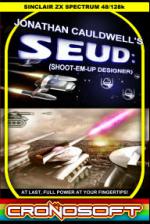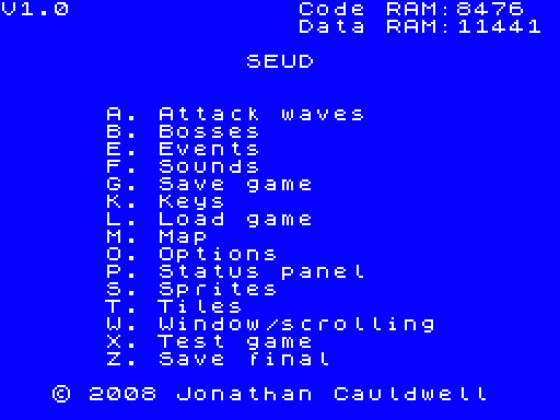
Micro Mart
 5th June 2008
5th June 2008
Categories: Review: Software
Author: Jason D'Allison
Publisher: Cronosoft
Machine: Spectrum 48K
Published in Micro Mart #1007
For one week only, Jason D'Allison takes a seat in the retro chair...
Retro Mart: Better By Design
Shaun Bebbington has kindly given up his column this week to allow me to review the piece of software that's given me more pleasure so far this year than probably any other. Amazingly, seeing how I normally spend my time messing about with the latest stuff for the PC, this particular title is for that rubber-keyed senior citizen we call the Spectrum. Put your hands together, friends and neighbours, for SEUD - the Shoot-'Em-Up Designer.
As the title suggests, SEUD isn't a game. Rather, it's a game maker. It allows you to create your very own Spectrum megablaster - in machine code, no less. Worry not if you don't possess even an ounce of programming experience - SEUD is suitable for rookies and old hands alike. It's the latest gem to fall from the fingers of the fabulous Jonathan Cauldwell. On firing SEUD up, there's no splash screen or fancy titles. To save valuable memory - both your game code and SEUD's own program code have to be squeezed into 48KB - you're put straight at the main menu. The best place to start is with your sprites - the player, enemies, and bullets. Each one is crafted from a 16 x 16 grid, and sweetly, if you use multiple frames, it's possible to create simple animation. Sadly, my own sprites are laughable. I did so poorly in my college art exam I was lucky to scrape even a U.
'Tiles' are created in much the same way. These are the building blocks for the game's play field - cavern walls, buildings, and so on. You can configure the play field in one of two ways: it can either scroll harmlessly by in the background or act as a hazard that rewards the player with instant death. You can also control the direction of scrolling (right-to-left or top-to-bottom works best).
Of course, you need attack waves, too - the paths the enemies will take. Designing these is as simple as tracing a course with the cursor keys and space bar, and once you've created a few, you're ready to enter the map editor. This is where you plan the game's levels - the arrangement of tiles and the order and timing of the attack waves. After that, you've got the basics of a finished game. It's a doddle!
Don't equate SEUD's ease-of-use with a lack of power and flexibility, however. There are countless tweaks you can apply. Want to add some bosses, bonus items, and power-ups? Easy. How about some sound effects? Piece of cake (though mine are as rubbish as my sprites!). You can adorn your game with all the accoutrements you'd expect to find in a commercial title.
There are a couple of snags, though. First, each level can have only two colours - a background (typically black) and a foreground. Second, if you want to export your creation (in order to share it with others, perhaps), either to a cassette (for real hardware) or a tape file (for emulators), you'll need to graft on a BASIC loader using Jonathan's Intro Maker (free), available here: tinyurl.com/2tfctl. It's all a bit of a pain.
Overall, however, SEUD is a remarkable achievement. Why not while away a few fun hours and see what you can come up with? For an example of what's possible, download the free Damage (use the link given above), a super SEUD-developed shooter from Mr Cauldwell himself.



